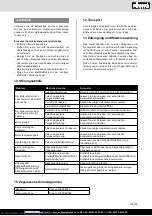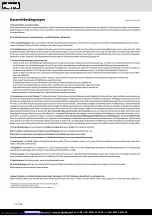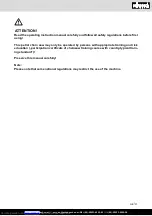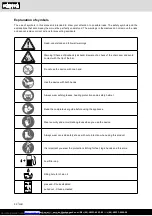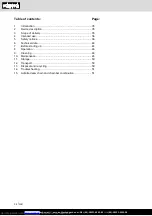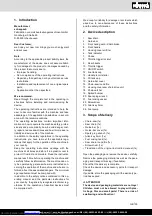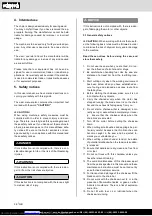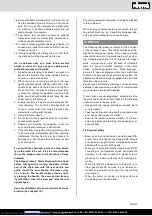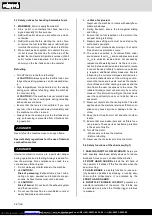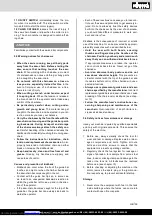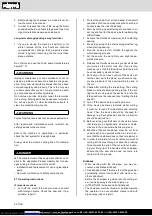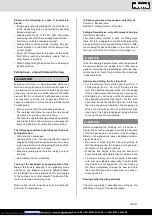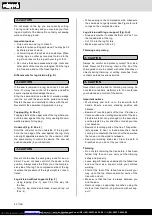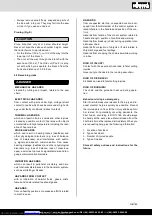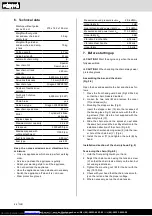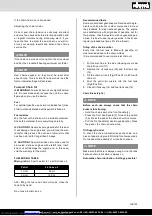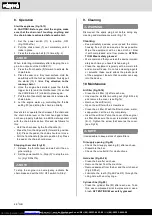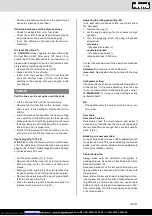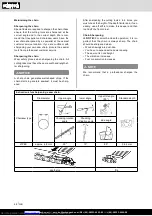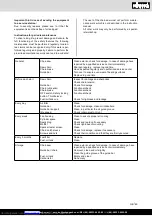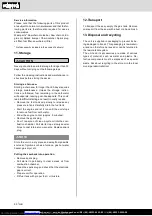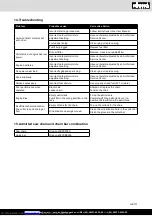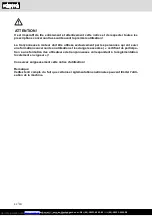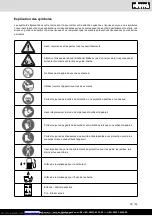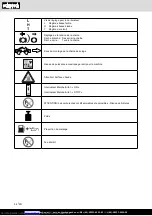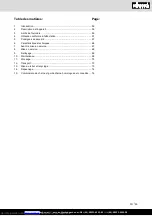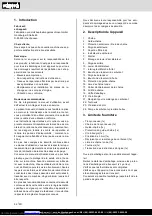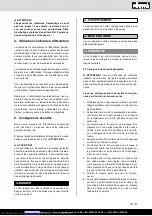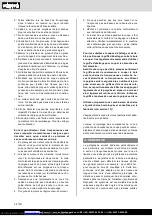
www.scheppach.com /
+(49)-08223-4002-99 /
+(49)-08223-4002-58
GB
| 43
HAZARDS
from unexpected start-up, unexpected overrun/over-
speed from failure/disorder of the control system re-
lated to failure in the handles and position of the con
-
trols.
Hazards from failure of the control system related to
handle strength, position of controls and marking.
Hazards from break up (chain) during operation relat-
ed to saw chain.
Hazards from ejection of objects or fluids related to
chip discharge and fuel spillage.
Hazards from dropping the chain-saw while working
in a tree.
RISK OF INJURY !
Contact with the saw-chain can lead to fatal cutting
injuries.
Never put your hands into the running saw-chain.
RISK OF KICKBACK!
Kickback can lead to fatal cutting injuries.
RISK OF BURNING!
The chain and the guide bar heat up during opera
-
tion.
Behaviour during an emergency
Start First Aid measures relevant to the injury and re-
quest medical help as quickly as possible. Prevent
the injured person from further injury and keep him/
her rested. For potentially occurring accidents, the
First Aid kit, according to DIN 13164, should always
be handy at the work place. Material taken from the
First Aid kit must be replaced immediately. When you
are requesting help, give the following information:
1.
Location of accident
2.
Type of accident
3. Number of injured people
4. Type of injuries
Store all safety notices and instructions for the
future.
•
Always remove small freely suspended parts of
the tree with a top cut. They may fall into the saw
or trap it if you use an undercut.
Pruning (Fig. K)
m
CAUTION
Prune branches only at or below shoulder height.
Never cut branches above shoulder height. Leave
that kind of work to a professional.
•
For the first cut (Pos. 1), cut 1/3 of the way into the
lower part of the branch.
•
Then cut all the way through the branch with the
second cut (Pos. 2). The third cut (Pos. 3) is a top
cut with which you separate the branch from the
trunk at a distance of 2.5 to 5cm.
5.8 Remaining risks
m
DANGER
MECHANICAL HAZARDS
created by cutting and impact, related to the saw
chain.
ELECTRICAL HAZARDS
from contact with parts under high voltage (direct
contact) or parts which have become under high volt-
age under faulty conditions (indirect contact).
THERMAL HAZARDS
which can result in burns, scalds and other injuries,
created by possible contact of persons with objects
or materials with high temperature including the radi-
ation of heat sources.
NOISE HAZARDS
which can result in hearing losses (deafness) and
other physiological disorders (e.g. loss of balance,
loss of awareness), and interference with audito-
ry signals and speech communication. Can cause
hearing damage (deafness) and other physiological
disorders (e.g. loss of balance, loss of conscious-
ness), as well as to acoustic signal disorders and lan-
guage communication disorders.
VIBRATION HAZARDS
which can result in peripheral circulatory and nerv-
ous functional disturbances in the hand-arm system,
such as white finger disease.
HAZARDS FROM CONTACT
with or inhalation of harmful fluids, gases, mists,
fumes and dusts related to exhaust gases.
HAZARDS
from unhealthy postures or excessive efforts related
to machine use.
Heruntergeladen von
Handbücher-Suchmachiene

